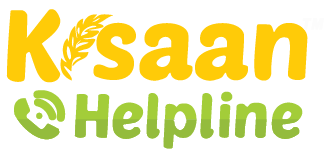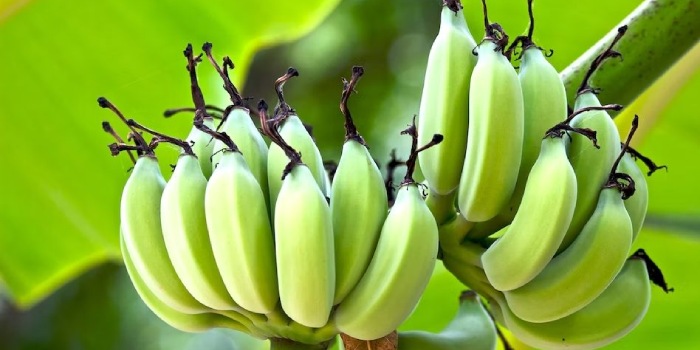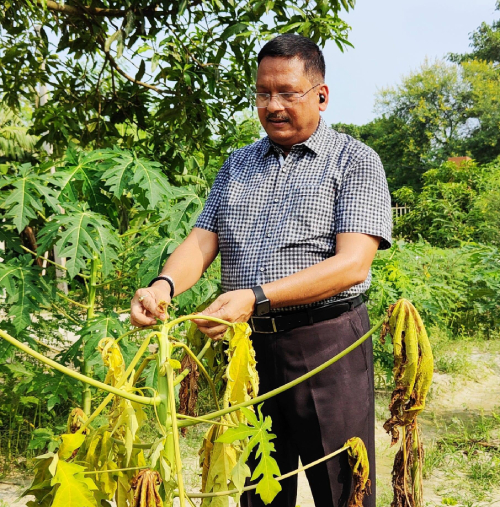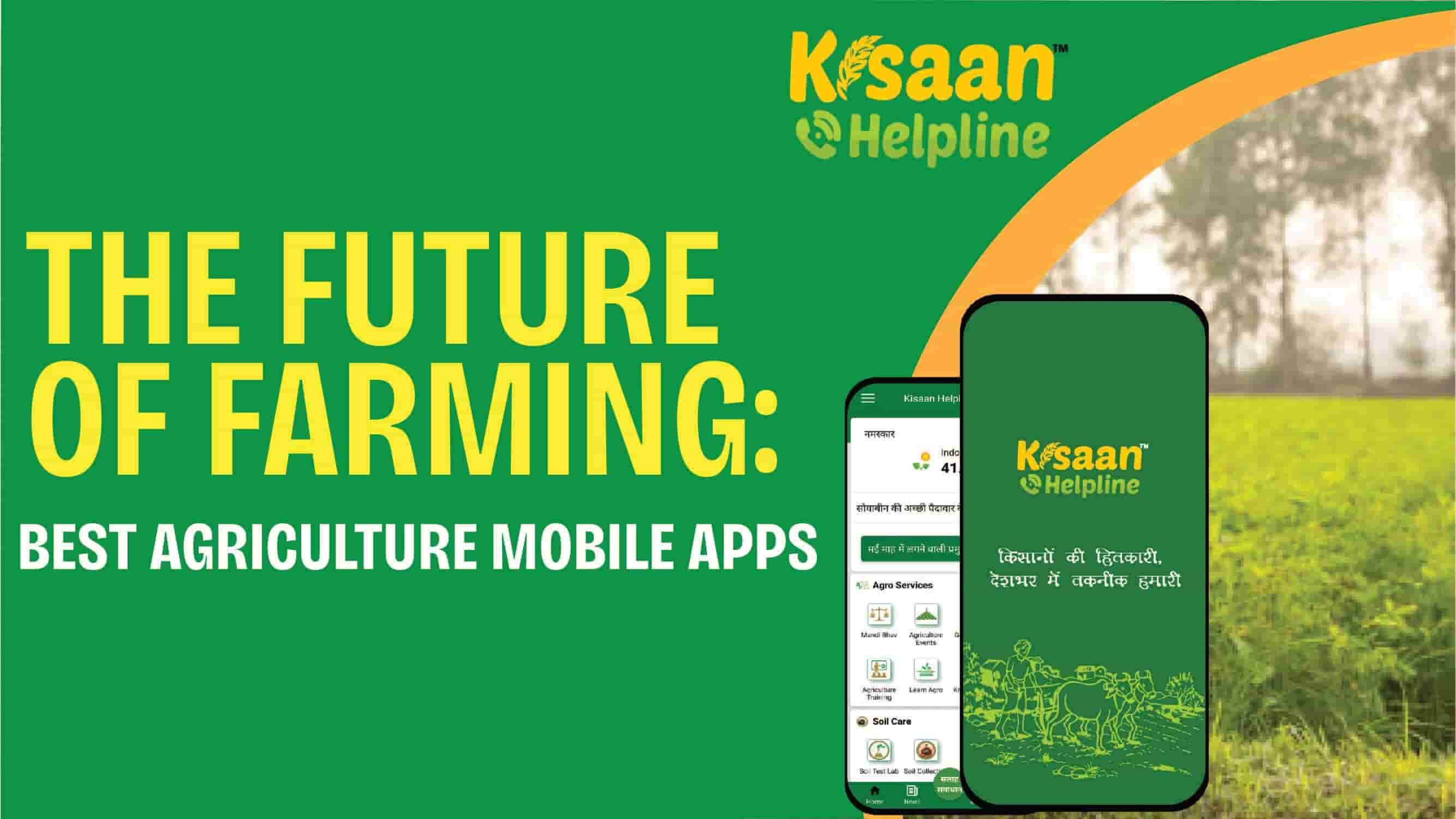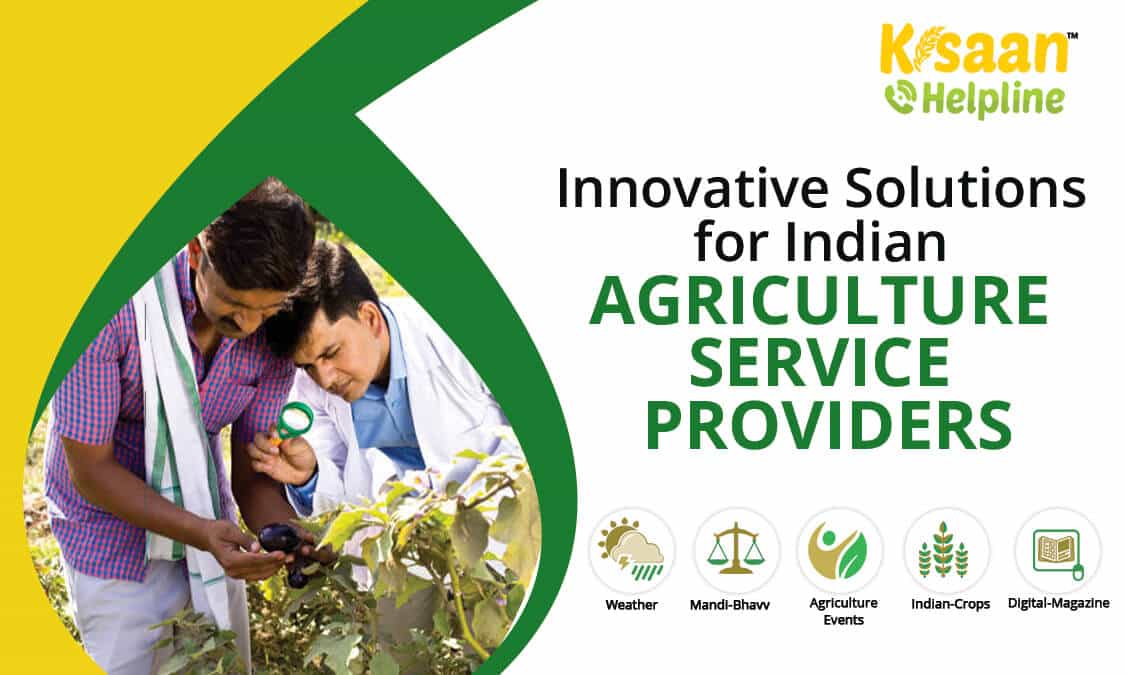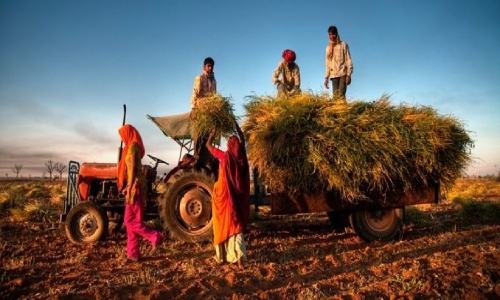
How to Manage Risk and Uncertainty in Agriculture
Vikas Singh Sengar1 and R.K. Doharey2
1. Assistant Professor, Department of Agriculture, SIPS
2. Professor and Head Department of extension Education, ANDUAT Kumarganj, Ayodhya
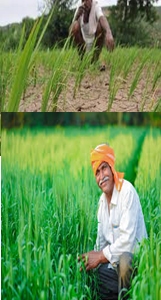 Farming is a risky enterprise. Farmers take the risk and make decisions every day that affect their farming operations. Many of the factor that affect the decisions that farmers make cannot be predicted with 100% accuracy; weather conditions change prices at the time of harvest could drop; hired labour may not be available at peak period ;machinery and equipment could break down when most needed; draught animals might die; and government policy can change overnight. All of these changes are examples of the risks that farmers face in managing their farm as a business; all of these risks affect their farm profitability. While Farmers have always faced risks, farming has over the years as a result of market liberalization and globalization, become increasingly risky. Skilful farmers and other business people generally do not become involved in risky situations unless there is a chance of making profit. Higher profits are usually linked with higher risks.
Farming is a risky enterprise. Farmers take the risk and make decisions every day that affect their farming operations. Many of the factor that affect the decisions that farmers make cannot be predicted with 100% accuracy; weather conditions change prices at the time of harvest could drop; hired labour may not be available at peak period ;machinery and equipment could break down when most needed; draught animals might die; and government policy can change overnight. All of these changes are examples of the risks that farmers face in managing their farm as a business; all of these risks affect their farm profitability. While Farmers have always faced risks, farming has over the years as a result of market liberalization and globalization, become increasingly risky. Skilful farmers and other business people generally do not become involved in risky situations unless there is a chance of making profit. Higher profits are usually linked with higher risks.
In economics, the definitions of risk and uncertainty are different. Risk is present when future events occur with measurable probability. Uncertainty is present when the likelihood of future events is indefinite or incalculable.
Farming is a risky enterprise. Farmers take the risk and make decisions every day that affect their farming operations. Many of the factor that affect the decisions that farmers make cannot be predicted with 100% accuracy; weather conditions change prices at the time of harvest could drop; hired labour may not be available at peak period ;machinery and equipment could break down when most needed; draught animals might die; and government policy can change overnight. All of these changes are examples of the risks that farmers face in managing their farm as a business; all of these risks affect their farm profitability. While Farmers have always faced risks, farming has over the years as a result of market liberalization and globalization, become increasingly risky. Skilful farmers and other business people generally do not become involved in risky situations unless there is a chance of making profit. Higher profits are usually linked with higher risks.
In economics, the definitions of risk and uncertainty are different. Risk is present when future events occur with measurable probability. Uncertainty is present when the likelihood of future events is indefinite or incalculable.
Risks in Farming:
Farmers make decisions every day that affects farming operations. Many of the factors that affect the decisions they make cannot be predicted with complete accuracy; this is risk. Farming has become increasingly risky as farmers become more commercial.
What is Risk?
Risk is a probabilistic phenomenon. In agriculture from the beginning to the end there is risk of production and prices.But sometimes on the basis of the past knowledge and experience the entrepreneur can predict that there is a possibility of failure of the crop and that possibility can be predicted on the basis of probability.
Source of risk:
- Risk affects production such as changes in the weather and the incidence of pests and diseases.
- Equipment breakdown can be a risk as can market price fluctuations.
- Barrowing money can also be risky with sudden changes in interest rates.
- Finally, there are risks related to health and wellbeing of farmer and his family and the supply of labour for the farm.
The most common sources of risk in farming can be divided into five areas:
1. Production
2. Marketing
3. Financial
4. Institutional
5. Human
Risk and variability:
Regardless of the source of risk, the degree of riskiness of an action depends, on the ability to predict what will happen in the future. Risk occurs because of unexpected changes. If farmers are able to understand and predict the patters and trends throughout the year the change that occurs may not be so risky. However, changes they cannot be predicted and are more sudden are likely to be more severe in their impact on the farm.
Risk management and Decision making:
Decision making is the principal of management. Early in cropping season farmers must make decisions about what crops to plant, and what seeding rates and fertilizer level to use .The yield and prices obtained will not to be known with certainty of several months, or several years in the case of perennial crops and livestock. For effective decision to be taken, farmers must have all the necessary information regarding input prices, output prices and yield, as well as other technical data.
Decision making process and risk:
Farmers, like others, generally have at least a basic set of goals and objectives in life. Some may have thought these through very carefully. Others may have only a general idea of what to achieve.
Either way, every farmer grows crops or raises livestock for a reason. It may be for household food consumption. It may be for profit, because the farmer has no alternatives source of income or it may be for any combination of these or reasons.
Steps involved in decision making cycle:
It is helpful for farmers to understand the essential elements of decision making the basic steps involves in decision making are-
1. Setting goals and objectives.
2. Exploring opportunities for meeting goals and objectives.
3. Evaluating opportunities and alternatives.
4. Selecting opportunities and alternative.
5. Planning and implementing the selected opportunities and alternatives.
6. Reflecting on and evaluating selected opportunities.
Steps involves in decision making and risk:
Farmers differ in the degree to which they accept and estimate risk. Farmers take basic decisions on a number of factors are willing to accept more risk than others. Often farmer’s attitudes regarding risk are based on their personal feelings rather than information presented to them to help make more rational decisions.
Steps in Decision making risk are-
1. Identify possible source of risk (price, pests, yield, labour)
2. Identify possible outcomes that could occur as a result of weather, price changes (low income, crop and live stock production)
3. Decide alternative strategies available (packaging, pest control, production plan and new technology)
4. Assess consequences or results of each possible outcome for strategy
5. Evaluate trade –offs between the cost of risk and gains that can be made
Farmers’ attitudes toward risk:
Farmers differ in the degree of which they accept risk. Some farmers are willing to accept more risk than others. Attitude to risk are often related to financial ability of the farmer to accept a small gain or loss. Farmers attitudes may be classified as risk-averse those who try to avoid taking risk; risk –taker those who take the risk (who are open to more risky business options); and neutral farmers who lie between the risk-averse and risk-taking.
Risk Management:
Decision- making is the principal activity of management. All decisions have outcomes or consequences. However, in most situations the outcome of a decision cannot be predicted. For effective decisions to be taken, farmers need information on many aspects of the farming business. e .g . In forming production much depends on natural conditions. The farmer is not sure about the future. Though he may base the probability of the outcome on the past experience and knowledge.
There are two theories are there to guide the farmers in the adoption of enterprise of the farm .these theory are –
1. Game theory
2. Decision theory
Uncertainty:
Uncertainty is a state of doubt about the future or about what is the right thing to do. Uncertainty is present when the likelihood of future events is indefinite or incalculable.
Types of uncertainty:
Uncertainty can be classified into two types.
1. on farm uncertainties
2. off farm uncertainties
1. On farm uncertainties:
They are arising due to farmer’s own sources e.g. the use of labour, the family labour and decision on the combination and use of resources.
2. Off farm uncertainty:
Off farm uncertainty pertain to the conditions those are not in the control of the farmers. E.g. price, marketing, technology, institutions and govt. policy etc. no individual farmer can affect on factors and conditions.
Generally the uncertainty classified as follows
I. Price uncertainty:
Price fluctuation of inputs does not affect the production to large extent.
There are four possibilities in the enterprises.
1. High returns with low price uncertainty
2. High returns with high price uncertainty
3 .Low returns with low price uncertainty
4. Low returns with high price uncertainty
Only second and third possibility is rational and fourth possibility should be rejected.
II. Yield Uncertainty:
There can be four possibilities-
i. Low yield –high risk
ii. Low yield –low risk
iii. High yield- high risk
iv. High yield-low risk
The first possibility is not taken up at all. The fourth category enterprise would be taken up to maximum yield permitted by the farm resource. In fourth and third category of possibility rational decisions are to be taken.
2. Technological uncertainty:
3. Institutional uncertainty:
4. Uncertain availability of inputs:
5. Uncertainty of probability:
The uncertainty of all the above factors like price, yield, etc. leads to the uncertainty of probability.
There are eight possibilities in cost and profitability of the enterprise-
i. Low cost –low profitability –low variability
ii. Low cost-low profitability-high variability
iii. Low cost- high profitability- low variability
iv. Low cost- high profitability- high variability
v. High cost-low profitability-low variability
vi. High cost –low profitability-high variability
vii. Low cost- high profitability-low variability
Viii. Low cost-high profitability-high variability
In case 3rd possibility best possible choice, 6th possibility rejected but in case of other six possibilities the rational decision to be taken.
Factors on which the amount of risk taking depends:
1. The amount of capital invested
2. Age
3. Economic status
4. Spirit of enterprise
5. Loss in social status
Steps against risk and uncertainty:
1. Diversification
2. Insurance
3. Agronomic practices
4. Selection of reliable enterprise
5. Flexibility
6. Liquidity
Safeguards against Risks and Uncertainty:
Some farmers take more risk than others. However, all farmers use one or more measures of different types to safeguard themselves against risks and uncertainties on their farms. The various measures generally used to against safeguards of risk and uncertainty.
1) Selection of enterprises with low variability:
2) Discounting Returns:
3) Insurance:
Insurance covers the cost to some extent so as to minimize the loss. It means to reduce the farming risk as well as livestock risk. Crop insurance reduces risk in farming.
4) Forward Contracts:
They reduce the future prices of both inputs and outputs into certainty.
5) Flexibility:
This refers to the convenience with which the organization of production on a farm can be changed. The main objective of the enterprise is to maximize profit. Allocation of resources in such a way that helps in maximization of profit one to another enterprise.
a) Time Flexibility:
Time flexibility may be introduced either through proper selection of products or production methods or partly by both. Orchard plantation is a relatively rigid enterprise than annual crops. A short-lived farm structure is more flexible that the durable.
b) Cost flexibility:
Wherever time flexibility is of limited use, cost flexibility becomes important. Cost flexibility refers to variations in output within the structure of a plant of a longer life. Extension or concentration of output, whenever desired by favorable prices or yields can be brought at lower cost for a given farm. Owning tiller may have more cost flexibility rather than custom hiring power tiller.
c) Product flexibility:
Product flexibility aims at changes in production in response to price changes. In this category, machines, farm structure, etc, can be readily shifted from one product to another.
6) Liquidity:
The farmer can get better results and more success if he is keeping adequate liquidity.
That easy availability of cash can save him from so many problems and misfortunes.
The adequate case as well as easy availability of credit helps the farmer to spend the necessary amount to divert the unfavorable happenings. This refers to the case i.e. farm assets can be converted into cash. If some of the assets are easily converted, into cash, it provides a safeguard to the farmer by enabling him to make necessary adjustments in response to risks and uncertainties.
7) Diversification:
It involves selection of suitable crop and enterprise. Though diversification process several enterprise are taken. Under risky environment, a farmer may not specialize in a single enterprise. He may choose several enterprises. It serves as a good method to prevent heavy losses.
8) Maintenance of resources in reserve:
There is a risk or uncertainty about the availability of the right inputs, in the required quantity at the right time and place and at a reasonable price. If farmer assumed that demand and supply of the resources are imbalanced in future then the best way is to maintain stocks of inputs in advance for future use.
Maintenance of sufficient stocks depends on the availability of funds.
9) Adjustment to uncertain of Inputs:
When a resource is not available, then farmer can safeguard against such risk and uncertainty is by exploring the use of some other resource as a substitute. If a farmer is uncertain about the availability of inputs then choose the best alternatives.
